The old ways of close shaving with a straight razor seem to be coming back with full force. Who knows, maybe men are tired of using the safety razors and want to know how it feels to get a close shave the macho way.
Based on this, we think it’s the right time to tell you all about the antique straight razors and how they served the male population for centuries.
Straight razors are often described as the manliest method of removing hair. Because it takes a lot of skills and coordination for a man to shave his own hair with it. This historical tool improved male fashion before and during the 19th century. The best thing about them is that they can never go out of date. Although, the advent of the plastic safety razor in the twentieth century drastically reduced the number of straight razor users.
Many salons still use the straight razor to trim beards, eyebrows, and scalp hair. Hair experts say that no modern equipment is as effective as the straight razor. In all honesty, straight razors have come a long way. We’re not just referring to the new straight razors; although they also do an incredible job, they’re not as perfect as the older, vintage brands.
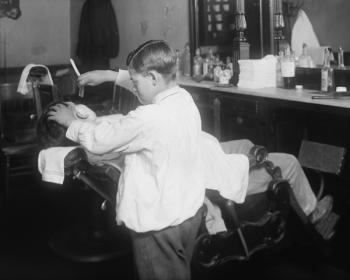
Source: a sharper razor
In this piece, we’ll be addressing the complete value guide of antique straight razors—Kicking off with the history of the straight razor and best techniques to date one of these artifacts accurately. Expect to be frazzled when you read about some of the most valuable straight razors sold within the last two decades.
Table of Contents
The History Of Antique Straight Razor
The straight razor has a broader development history than many other antique items used in day-to-day activities. Archeological research posits that men have successfully achieved the clean shave look for centuries using stone, bone, and shells. These materials are referred to as the early razors.
The wooden “L” shaped straight razor came sometime in the 1700s. To a novice, very little has changed in this design since then. However, antique collectors would tell you that the style continuously evolved till the 1900s (when the safety razor was developed). Manufacturers of the straight razors in the eighteenth and nineteenth-century ingeniously modified the handles, steel, design, and even the material composition of the straight razor. The subtle modifications made it better for users to remove stubbles and removed some of the risks for self-groomers.
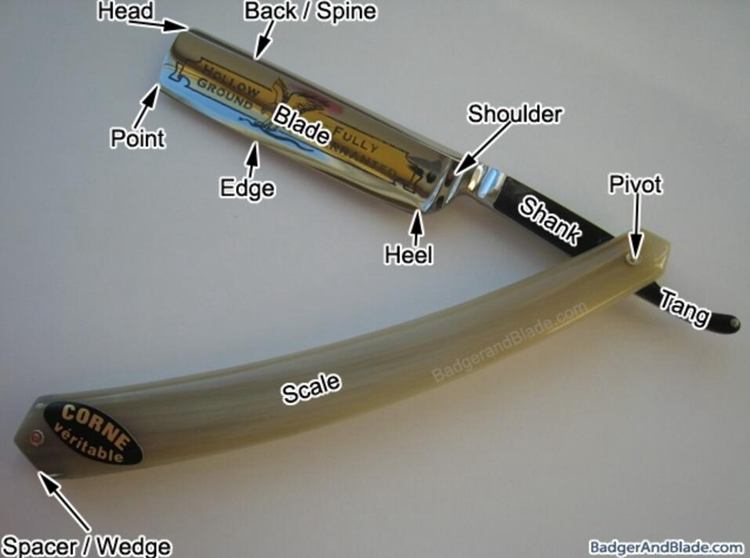
Here is a much more informative breakdown of the history of the antique straight razor.
Straight Razors PRE-1800
Between the sixteenth and seventeenth centuries, razors were similar to small hatchets, which local blacksmiths produced. Many Of the razors from this era had no maker’s stamp or branding. Archaeologists say that shaving wasn’t so common during this period, as most of the men preferred to grow long beards.
In the 1700s, the “small hatchet” evolved into a wedge-shaped blade and scale. The blade was designed to be wider at the point with a straight edge. Scales were made from wood, bone, and horns—the wealthy used scales made from ivory or tortoiseshell. The design of the scale was sometimes flat or beveled, while the pins at both ends were produced from brass and iron.
Some of the antique straight razors from this era are marked with the phrase “warranted” and some “cast steel.” Antique experts explained that these words were used to point out the metal used.
Straight Razors in the 1800s
Compared to the designs produced in this era, we can categorically state that the razors made in the 1500s, 1600s, and 1700s were crude.
Within the first three decades of the 1800s, the straight razor went through different stages of modifications. In the 1810s to 1820s, the makers added a shoulder to the blade and subsequently downsized the tool. The scales also developed a slight curve. In the next decade, the steel in the blade got mixed with silver. This altered the look of the metal. During this period, English razor manufacturers started marking their products with their monarch’s sign. In addition to this, makers added fluting or jimps to the top and bottom of the handles to improve grip.
From 1830 to 1840, the straight razor was further modified. The cast steel designs were let go, while the silver steel became mainstream. There were also variations in the available blades; some were etched, while the others were notched. Horns were pressed to design the now bow-shaped handles.
Between 1840 and 1870, wedge blades became more popular. Makers produced a wide range of designs. The technique of patterning scales with silver pins was also embraced. The more intricate the patterns, the more expensive the tool was. During this period, companies began to etch their marks and names on the blade tangs. Most of the antique straight razors from this era sported many designs. Some makers used silver and precious stones to create razors for the upper class.
Another notable observation about this period was the introduction of celluloid for scales.
Celluloid handles became mainstream in the late 1800s due to their versatility. At this point, the demand for the wedge-shaped blade designs had ground to a halt. Instead, they all preferred the hollow grinding blades. Towards the new century, manufacturers began to forge blades using machines. Antique straight razors from this time were often marked with “hand-made” or “hand-forged.”
Straight Razors in the 1900s
Straight razors remained relevant for about five decades before everyone’s attention went to the Gillette-invented razors. Before their ‘extinction,’ makers exclusively used celluloid for razor scales. At the same time, the hollow-ground blade profile had been perfected to offer up to 16 different angles of the blade profile.
If it weren’t for King Camp Gillette’s invention in 1901, manufacturers would have continued to find better ways to improve grooming through straight shaving.
Straight Razors Now
Modern straight razors created in this century are imitating the versions of the antique shaving razor. They have similar designs, only that they’ve been improved using technology, creativity, and better materials.
If you see a modern straight razor side by side an antique straight razor, you’ll realise that the shaving industry had come a long way from simple one-edged blades to having more durable stainless steel.
However, this improvement does not mean that the antique straight razor isn’t more valuable than their modern counterpart.
How to Date an Antique Straight Razor
Antique dating is a necessary activity that gives an idea of the item’s accurate production date. In this case, it involves estimating the approximate lifetime of the antique straight razor.
In our opinion, dating an antique straight razor is a non-stressful, relatively easy activity. Seeing as each decade since the advent of the first straight razor was followed with a modification in its design. The straight razor was gradually refined till it was perfected (or close to this) in the early 1900s. The collectability value of an antique straight razor depends primarily on its age.
If you purchased an antique straight razor today, a big part of you would be curious to know when exactly the piece was created. A friend once found an antique straight razor in their family home and was told it had been passed down. Although, it had been in disuse since the war settled. By looking at some key features and comparing them with online images, they could deduce when it was made. They even went further to value it. That’s the benefit of dating your antique straight razors. You’d be able to learn more about the artifact and what value pieces from that era have.
It is not possible to accurately tell the age of a vintage straight razor unless the age was stamped, and this is unlikely. The factors that can point you in the right direction include:
The Material – Before and during the 1800s, the primary materials used for the handles were horn, bone, wood, and tortoise shells. At the same time, the blades were mostly made with cast steel. It wasn’t until the late 1800s and early 1900s that silver steel became popular, and tangs were added to the blades.
The Design – The majority of the straight razors produced pre-1800s were plain. Artworks, photo etchings, and notches were added to the spines and blades respectively from 1830. The fancier designs were created more recently than others.
The Style – The wedge-shaped style was widespread from 1500 till the early 1800s. Manufacturers gradually modified the style till the razor became mostly hollow grounded.
The Maker’s mark – Company branding started in the mid-1800s. One of the most distinct marks on antique straight razors can be found on English-made products. Makers began to stamp the initials and crown of their reigning monarchs on the antique razors. The marks are often found on the handles, blade spine, and tang.
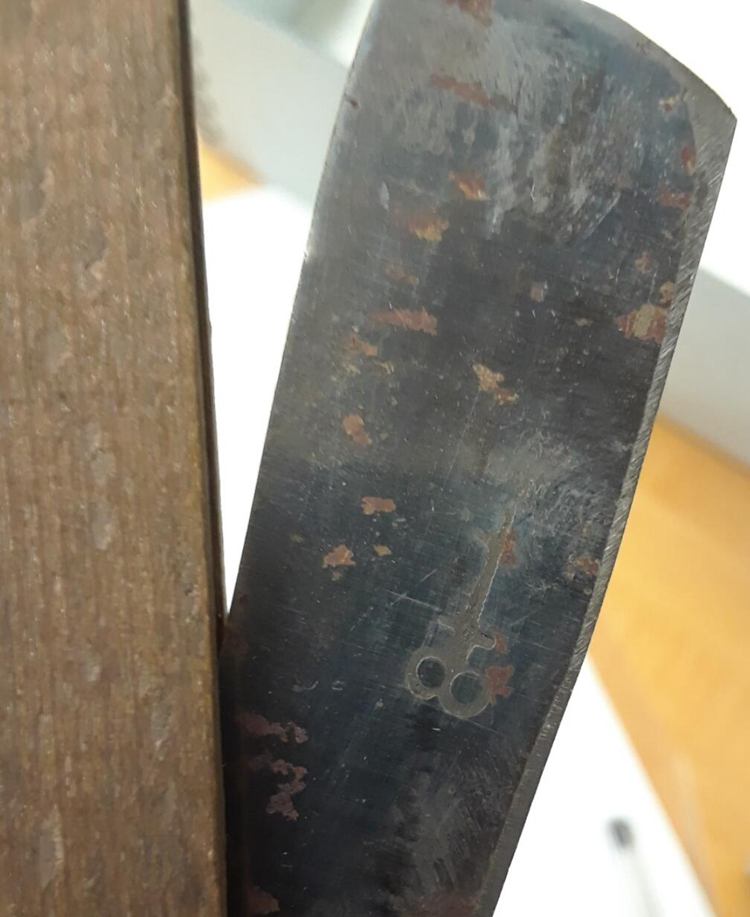
The tricky aspect of identifying antique straight razors is that they look almost the same way as vintage razors. But for this, the materials used to make the handles can help tell whether it is antique or vintage.
As a novice in the space, it is sometimes easy to make mistakes. Hence, we’ll suggest you procure the services of a professional, most especially if your antique razor doesn’t have apparent indicators.
5 Most Valuable Antique Straight Razors Ever Sold
All across America, Germany, and England, the antique straight razor reigned supreme from the 1800s to the mid-20th century. During this time, manufacturers from all regions of the world created their version of this grooming tool. Today’s worth of these antique pieces is attached to their age, condition, and manufacturer.
If you’re in the market to purchase valuable antique straight razors, make sure you go for a well-respected brand. That’s the only way to be half-sure that the piece would remain valuable in years to come.
Here are some of the most valuable brands that produced the most highly-priced antique straight razors that have been sold within the last twenty years.
1.Dovo Straight Razor
Carl Dorp Carl Arthur Voos established this brand in 1906. The DOVO brand, also known as the DOVO steelware and DOVO Solingen, has an unshakeable reputation in the shaving society.
The German-founded company mostly debuted hand-crafted straight razors in the 1900s. Their antique straight razors have blades created from carbon steel, aka silver steel, so the antique edges are so sharp and durable.
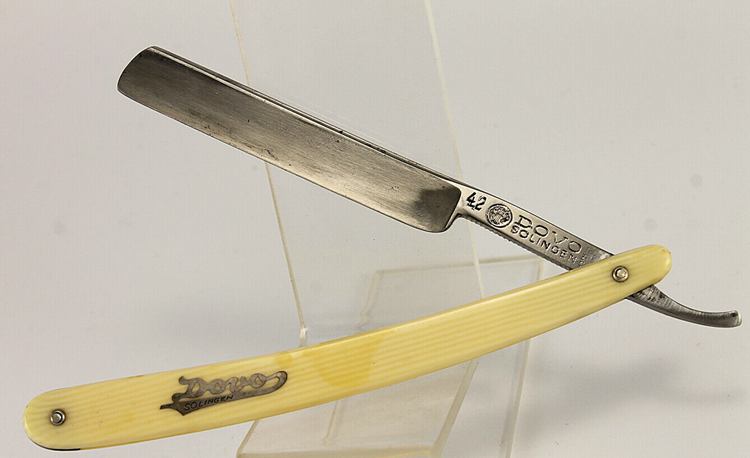
2. Lee’s Razors
This brand has been in existence for over 100 years. You can find antiques produced by this brand in reputable antique stores within and around your locality.
Antique vintage razors produced by Lee’s Razors still have their olive wood, ebony, or Africa car horn handles in pristine condition. Collectors of this brand have no worries about sustainability because the materials used during production several years ago were of the highest quality.
Lee’s antique straight razors are elegantly styled. They are hand-crafted by experienced artisans who ensure the handles are appropriately sanded and polished. Another reason why this brand is so valuable is that shavers can grip the handles excellently while shaving.
Lee’s antique straight razor
Price: $100
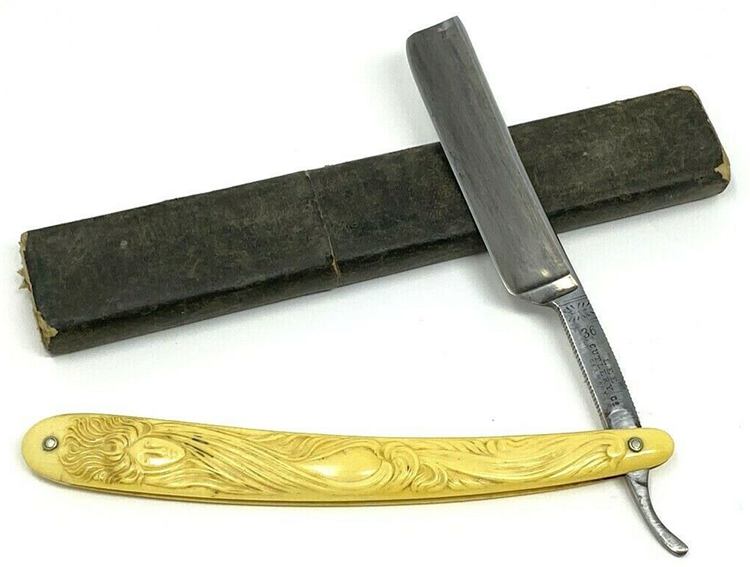
3. Joseph Rodgers Straight Razor
The Joseph Rodgers brand has produced hundreds of straight Razors, which possess superior quality. The Sheffield-based company began production in 1724.
To know if Joseph Rodgers produced your antique, inspect it and check for the Tang stamp and either one of these phrases; “His Majesty,” “Her Majesty,” or “Cutlery to Their Majesties.” With these markings, you’d be able to trace the item’s date of production easily.
Experts say their reputation is stellar due to their unmatched safe, durable, aesthetically pleasing straight razor blades and designs.
Joseph Rodgers straight razors are highly valuable because they are rare. Since the company closed down in 1975, its vintage pieces are still being sought by collectors, hunters, and passionate antique lovers.
Joseph Rodger antique straight razor
Price: $130
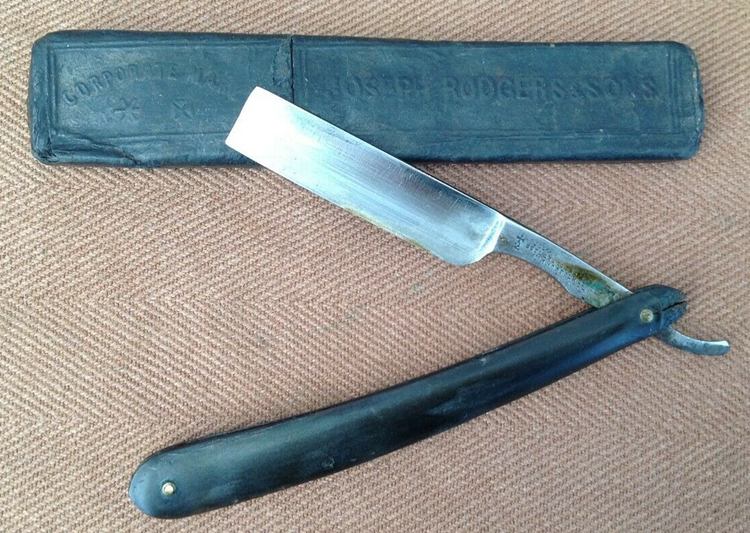
4. Boker Straight Razor
Established in Germany in 1869, the Boker manufacturing plant has been active for over 150 years in the straight razor industry.
The company used only the best materials and workforce when creating the top-quality vintage straight razor that they’re synonymous with today. The Boker brand is sometimes referred to as the king of antique straight Razors due to its beautiful and functional craftsmanship.
Many Boker antique straight Razors were manufactured to serve the top members of society. The blades were made from top-quality silver steel, which is lauded for its elasticity, edge retention, and toughness. This straight razor can also be bent a little and still return to its original shape.
The company is still active today and producing more modern designs of straight Razors. However, the antique pieces still offer the best shaving experience. As you can see below, they also cost hundreds of dollars.
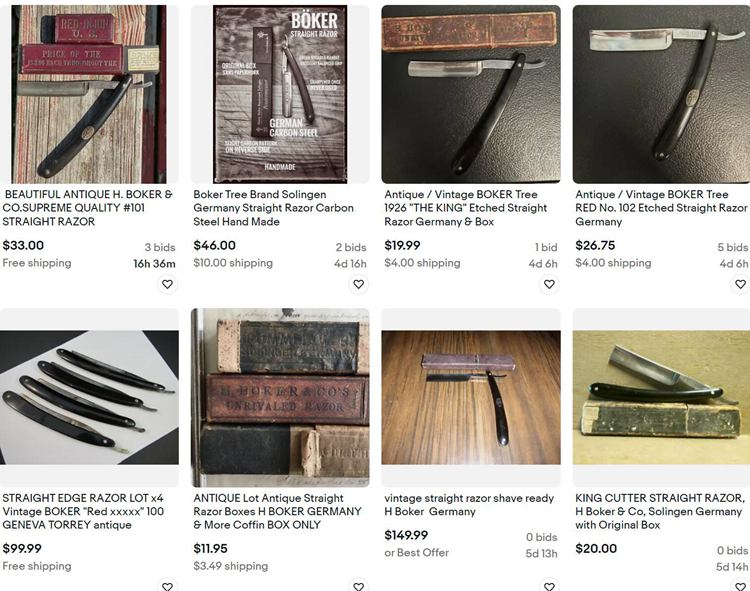
5.Thiers-Issard
A French brand established in 1884, the Thiers-Issard straight razors brought a new perspective to the designs of handles in the industry. The brand used a couple of exotic materials like ivory, ox bone, tortoise shells, and rare wood to take their razors to a better level.
As expected, these straight razors were sold to the wealthy class as most of the materials used were associated with nobles and royalties during that era.
The brand is still in business, and their vintage or antique straight razors can be purchased directly from the brand.
Assessing Antique Straight Razor Value: Antique razor price guide
Not all straight razors are worth more than a few dollars. Here are some factors you must consider before paying an exorbitant price for an antique straight razor. Also, If you’re planning to sell off pieces in your vintage straight razor collection, you must consider the following factors to ensure you don’t underprice or overprice the piece(s) to be sold.
Restorations
Some people confuse antique repairs with restoration. When an antique straight razor is restored to its initial condition, it has been cleaned, sharpened, and missing parts replaced with original antique items. Restored razors are sometimes priced higher than untouched antique straight razors. For example, the Celebrated Washington Razor produced by Wade & Butcher is priced at $600, compared to other 1900s straight razors, which cost less than $200.
Blade Size and Material
Some collectors determine the price of antique straight razors in terms of size. Blades made from stainless steel are often priced lower than carbon steel straight razors.
Brand
While assessing your antique straight razor, check out for the maker’s stamp by the spine of the handle or the blade’s tang. Antique straight razors manufactured from reputable brands like DOVO, Lee’s, or Boker’s are more expensive than others, especially if they’re in good condition.
Where To Buy Antique Straight Razor
Antique straight razors can be bought offline (brick-and-mortar antique or pawn shops) and online (e-commerce stores), although most prefer to buy online these days. Buying antiques online has its advantages and disadvantages; however, if you stick with reputable retailers, you will have a rewarding shopping experience.
Here are some online antique stores you can visit to find all kinds of authentic antique straight razors—even the rarest vintage.
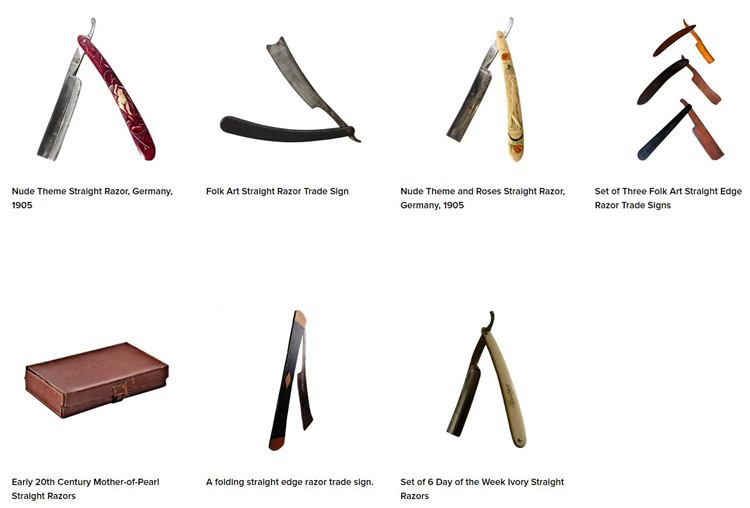
This online store stocks all types of original antique items. It has a thoroughly vetted auction site that allows sellers to list only valuable items.
1stDibs takes away the uncertainty attached to buying valuable antiques online. It ensures all sellers obey its strict standards. On this site, buyers rarely have an opportunity to bargain. However, they are always given value for money spent.
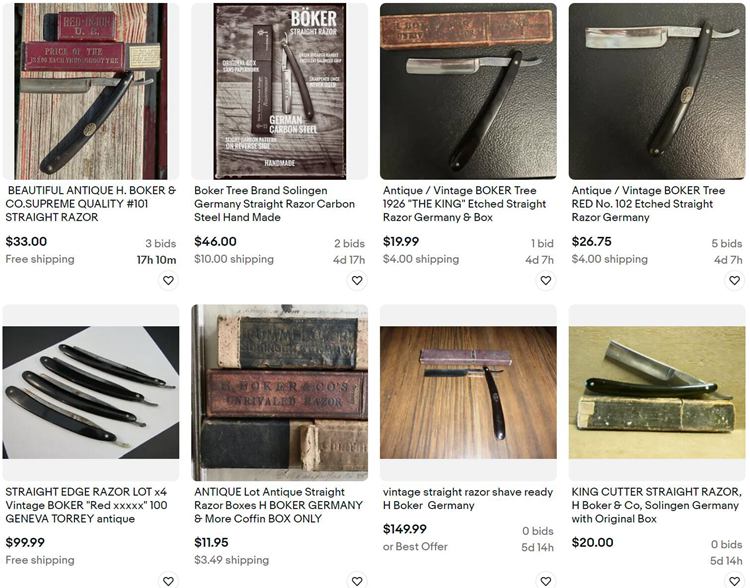
eBay is another famous site for antique items. The downside of this site is that it doesn’t offer the same level of protection as sole-antique e-commerce stores. When buying on eBay, you have to be cautious to avoid buying a less authentic item.
Before buying, make sure you check the seller’s available reviews. This would give you an idea of whether to go on or not. Also, patronize a seller with a solid return policy.
This online store is a large virtual mall that offers every antique and vintage item. You can easily spot different antique straight razors from other makers here; all you have to do is search.
Ruby Lane has an imposed no-questions-asked return policy up to three days after delivery—all shops must comply. You can quickly return an item that doesn’t suit your taste or meet the value of the money paid with confidence.
MS Rau is a renowned antique store that offers some unique antique straight razors. The store has this grand plan which allows customers to exchange items purchased within five years, as long as they’re still in pristine condition. With this plan, every item you buy here is a guaranteed investment.
Bottom Line
Just like that, you’ve learned all about the antique straight razor. Some of the keynotes you must keep to the heart include:
- You don’t need to have facial hair before purchasing an antique straight razor. You can gift it to your partner or sibling who has it, or you could collect it for its value.
- Vintage straight razors are custodians of history and often have higher quality than their contemporary counterparts.
- The better the condition, the more value it has.
Antique razors will forever be immortalized as an icon for gentlemen’s grooming. You can never go wrong with an authentic antique straight razor.

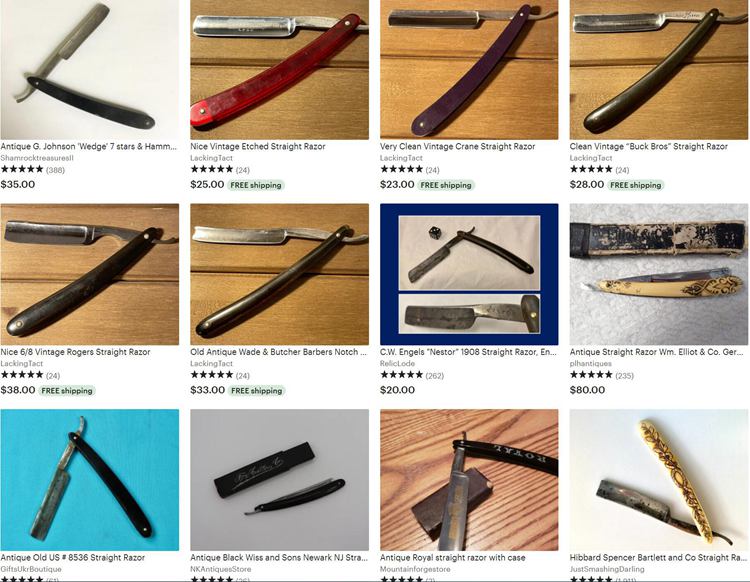
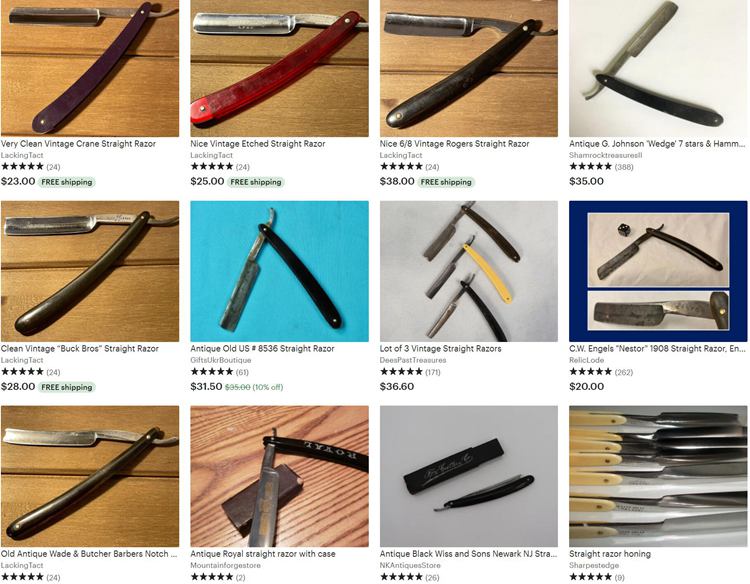
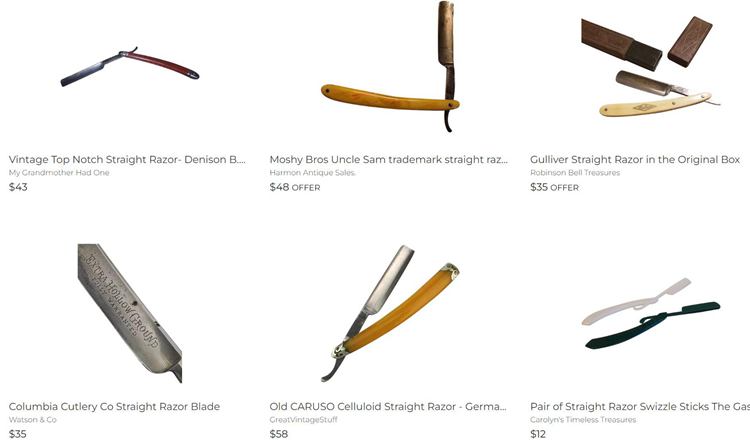




![Where To Sell Antique Furniture In 2022 [Ultimate Guide]](https://www.jacquelinestallone.com/wp-content/uploads/2022/09/Etsy-Your-Place-To-Buy-And-Sell-All-Things-Handmade-600x450.jpg)


